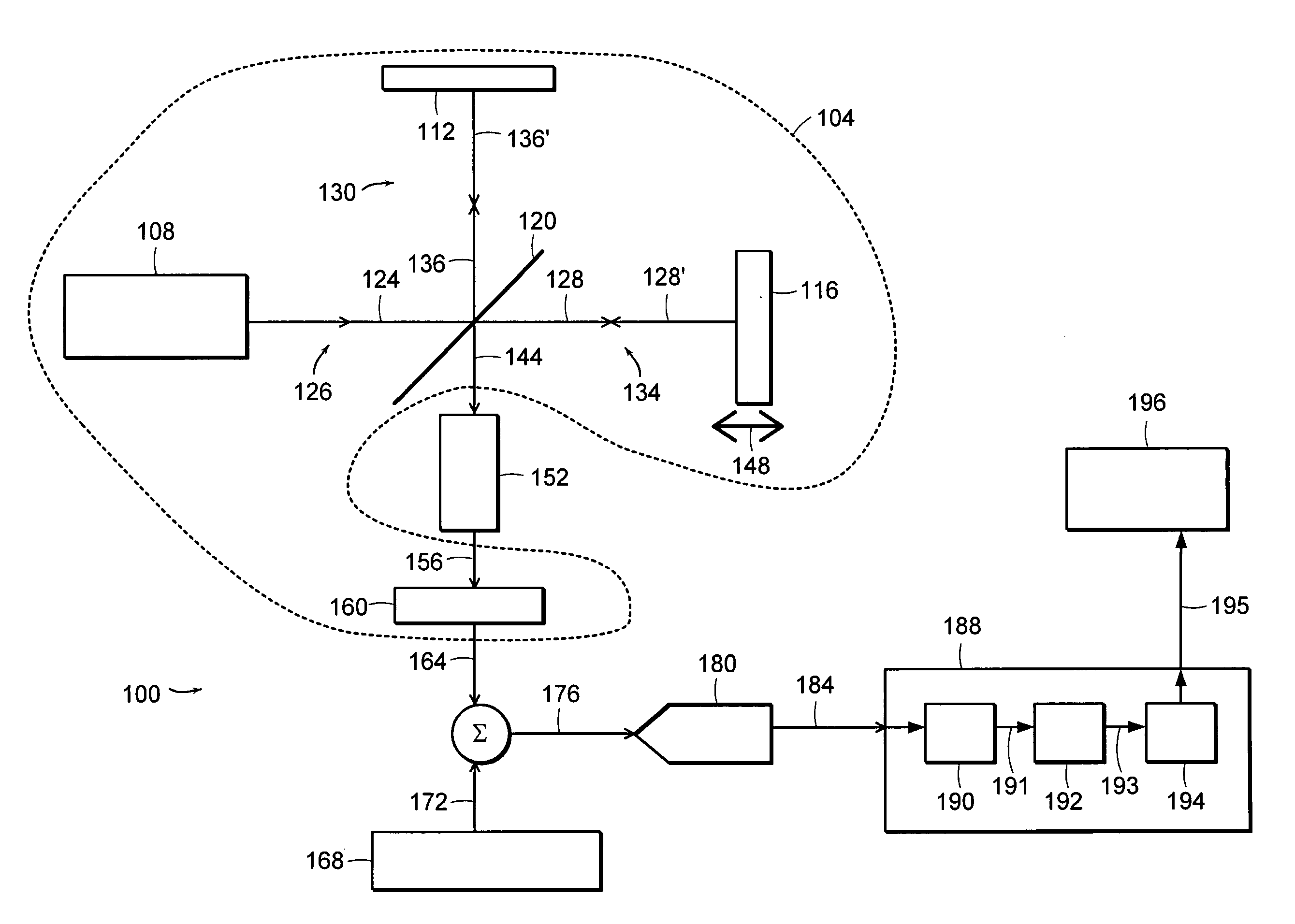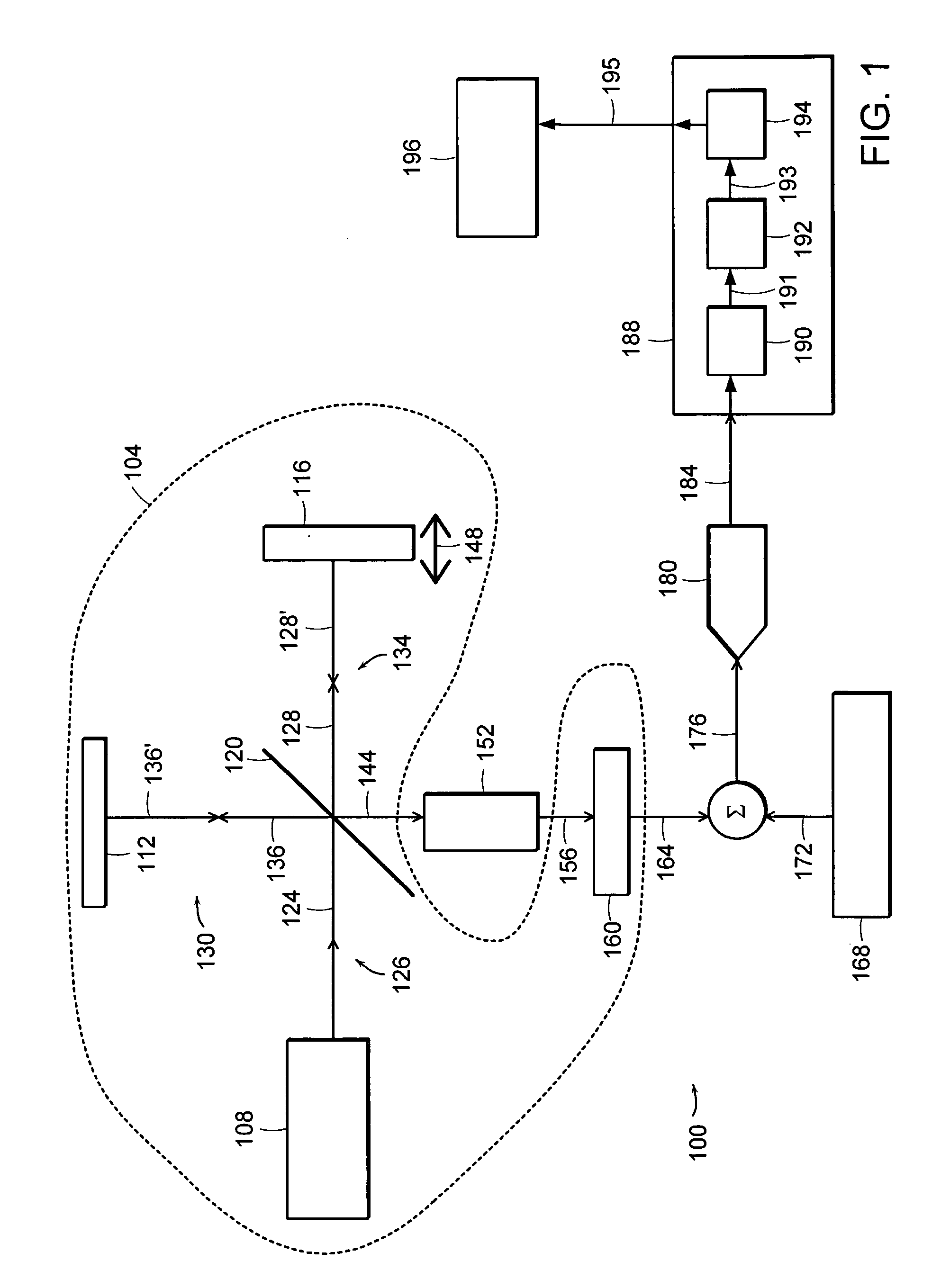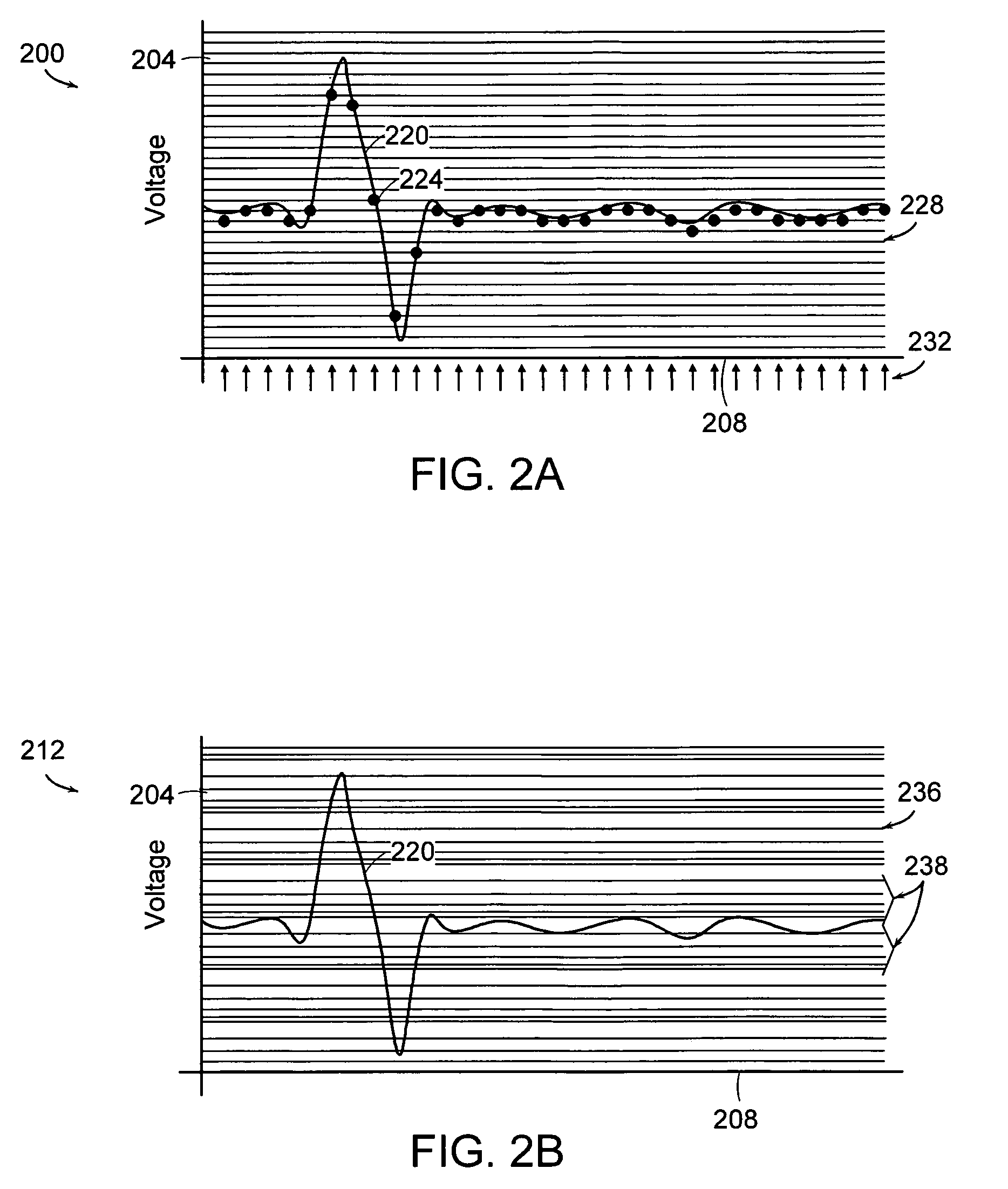[0008] The invention, in one aspect, features a
system for measuring radiometric signals. The
system is based upon the FTIR
spectrometer, which is well known to practitioners in the field of
spectroscopy. It includes a source of
infrared energy and a first module for splitting the
infrared energy into a first and a second infrared signal. The
system also includes a second module for creating a
path length different in the first signal relative to the second signal. This
path length difference is swept or varied in time, usually and desirably at a
constant rate. The system also includes a third module for combining the first signal having a
path length difference with the second signal to create an interference signal and to direct the interference signal through a sample (e.g., containing one or more of a
solid, liquid and gas). The system also includes a fourth module for detecting the sample signal. Since the path length difference is swept in time, the detected sample signal will be a time-varying (i.e., time-domain) signal proportional to the intensity of the light falling on the
detector at each instant in time. The system also includes a
signal source that outputs a selected signal (e.g., a pre-defined or randomly defined
dither signal) capable of reducing the effect of analog-to-digital converter nonlinearity on measured radiometric signals. The system also includes a fifth module that sums the detected sample signal and the selected signal. The system also includes an analog-to-digital converter that converts the combined detected sample signal and selected signal into a
digital signal, and then processes the signal in such a way that the effect of nonlinearity is substantially reduced. In some embodiments, one or more of the modules are incorporated into a single module. The nonlinearity can be, for example, one or more of integral, differential, or periodic nonlinearity.
[0011] The invention, in another aspect, features an apparatus for measuring radiometric signals that includes a source of
radiant energy to direct
radiant energy through a sample. The apparatus includes a first module for detecting the sample signal. The apparatus also includes an analog-to-digital converter. The apparatus also includes a
signal source that outputs a selected signal capable of reducing the effect of nonlinearity of the analog-to-digital converter when combined with the sample signal and converted by the analog-to-digital converter to create a first
digital signal.
[0014] In another aspect, the invention relates to a method for measuring radiometric signals (to for example, identify the concentration of molecules within a sample). The method involves splitting an infrared source signal into a first and second infrared signal and propagating the first and second infrared signals over different, adjustable path lengths (for example, where the path length difference is desirably swept at a
constant rate in time). The method also involves combining the first and second propagated infrared signals to generate an interference signal. The method also involves directing the interference signal through a sample and detecting the sample signal. When the path length difference is swept in time, the detected sample signal is a time-domain signal. The method also involves combining a selected signal (e.g., a pre-defined or randomly defined
dither signal) that is capable of reducing the effect of analog-to-digital converter nonlinearity on measured radiometric signals, with the detected sample signal to create a third signal. The method also involves converting the third signal into a
digital signal in which the effect of nonlinearity is substantially reduced by further
processing, such as taking a
Fourier Transform or averaging the signal.
[0016] In another aspect, the invention relates to a method for measuring radiometric signals that involves directing
radiant energy through a sample. The method also involves detecting the sample signal in the
time domain. The method also involves combining a selected signal capable of reducing the effect of analog-to-digital converter nonlinearity on measured radiometric signals, with the detected signal to create a first signal. The method also involves converting the first signal into a time-domain digital signal which, when processed, will substantially reduce the effect of ADC nonlinearity.
[0019] The invention, in one embodiment, features an apparatus for measuring radiometric signals. The apparatus includes a source of infrared energy and a first means for splitting the infrared energy into a first and second signal. The apparatus also includes a second means for creating a time-varying, variable path length difference in the first signal relative to the second signal. The apparatus also includes a third means for combining the first signal having a path length difference with the second signal to create an interference signal and to direct the interference signal through a sample. The apparatus also includes a fourth means for detecting the sample signal. The apparatus also includes a fifth means for outputting a selected signal capable of reducing analog-to-digital converter nonlinearity on measured radiometric signals and a sixth means for combining (e.g., summing or combining) the detected sample signal and the selected signal. The apparatus also includes an analog-to-digital converter that converts the combined detected sample signal and selected signal into a digital signal with which the effect of nonlinearity is substantially reduced upon
processing.
[0020] The invention, in another aspect, relates to apparatus and methods for improving the accuracy of analog-to-digital
converters. The method involves combining a selected signal that is capable of reducing the effect of analog-to-digital converter nonlinearity, with an
analog signal that is to be converted by an analog-to-digital converter. The characteristics of the first signal are selected so that a fundamental and
harmonics of the selected signal are substantially outside a bandwidth of frequencies associated with the
analog signal. The method also involves directing the combined signal to an input of an analog-to-digital converter and converting the combined signal into a digital signal.
 Login to View More
Login to View More  Login to View More
Login to View More 


